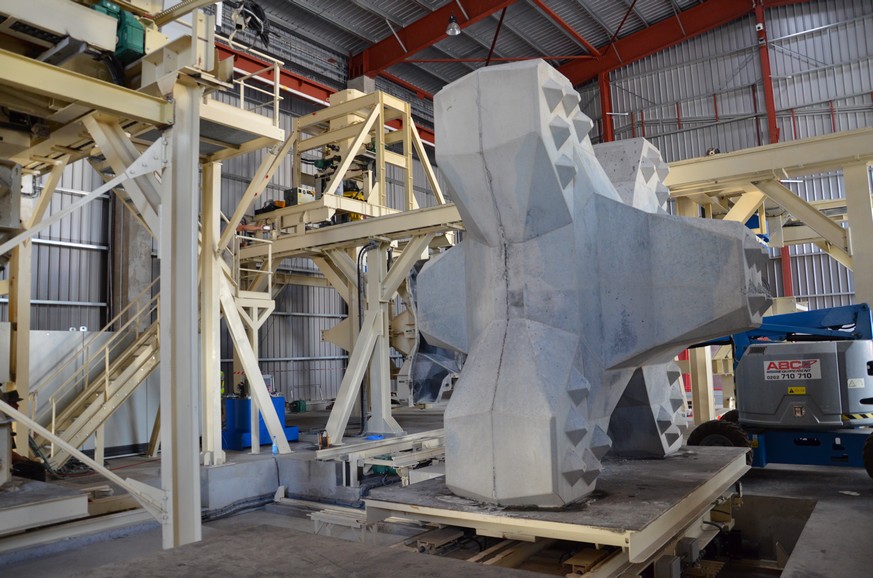In 2014, APS suggested the use of automation for the production of armour units on the “New Littoral Road” project. SCPR decided to trust APS on this and agreed to build the very first armour unit automated precast plant in la Réunion. APS relied on CBE Group's knowledge regarding automated segment production. The original project consisted of the production of 21 500 concrete elements, for which APS provided 105 metal moulds of different volumes and shapes : 11m³, 8m³, 6m³ and 4m³ using the X-Bloc and Accropodes technologies.
An essential project for the island, with more than 6 km of seawalls
The “New Littoral Road” (NLR) project was signed in 2006; it is essential to the Island’s wellbeing and will renovate a 40-year old road that links the commercial harbour to the Roland Garros international airport. The initial road was designed to support 10 000 vehicles a day, but is today used by more than 50 000 vehicles daily, creating numerous traffic jams and accidents. But traffic is not the only reason for the creation of this new road; flooding and rock collapsing also represent a threat. This explains why SCPR called on APS to provide an innovative solution for the armour unit production, necessary for the construction of three seawalls: 1,2km, 0,65km and 4,8 km.
A tailor-made factory for an optimized production
The 2 350 sqm automated plant allows an increase in productivity with minimum staff (3 operators only in the plant, 10 times less than for a traditional production plant). Unlike the traditional method, it is not the equipment and the operators that move from one mould to another, but the moulds themselves that move on rails from one station to another. This allows to save time, to reduce the flow and therefore the risk of accident, but also to reduce the ecological impact of the production. The average cycle time is approximatively 14 minutes, but it can vary depending on the size of the mould.
Moulds move on a rail to the concreting station, where an adjustable system adapts to the mould size. After the concreting, the concrete dries for 24 hours (the time needed to dry can vary depending on the concrete formula). As soon as it is dried, the concrete piece is automatically demoulded (one operator is necessary to open the mould) and placed on the evacuation line, while the mould sets out again to the concreting station (after being cleaned and oiled). Those handlings do not require any operators except for the concreting, demoulding and cleaning of the moulds. The concrete elements produced in an automated plant have an industrial and steady quality, thus reducing the number of rejected pieces. An automated plant also has the advantage to be covered, allowing thereby to maintain a constant production, regardless of the weather, which can be harsh in La Réunion.
The plant can produce up to 36 concrete blocks a day. As of today, more than 18 700 concrete elements have already been produced. The client estimates that he needs to produce more than 19 000 concrete elements to complete the seawalls, for a total of 37 500 armour units.
The automated precast plant is an innovative solution and an economical/ecological alternative for large projects. The La Réunion automated plant success reassured the major actors of the sector, allowing APS to win others automated armour unit plant projects, such as Calais, in France, or Aberdeen, in Scotland.
APS, expert in tailor-made solutions for precast concrete elements production, assists you during your whole project. Do not hesitate to contact us or ask for a quote.

